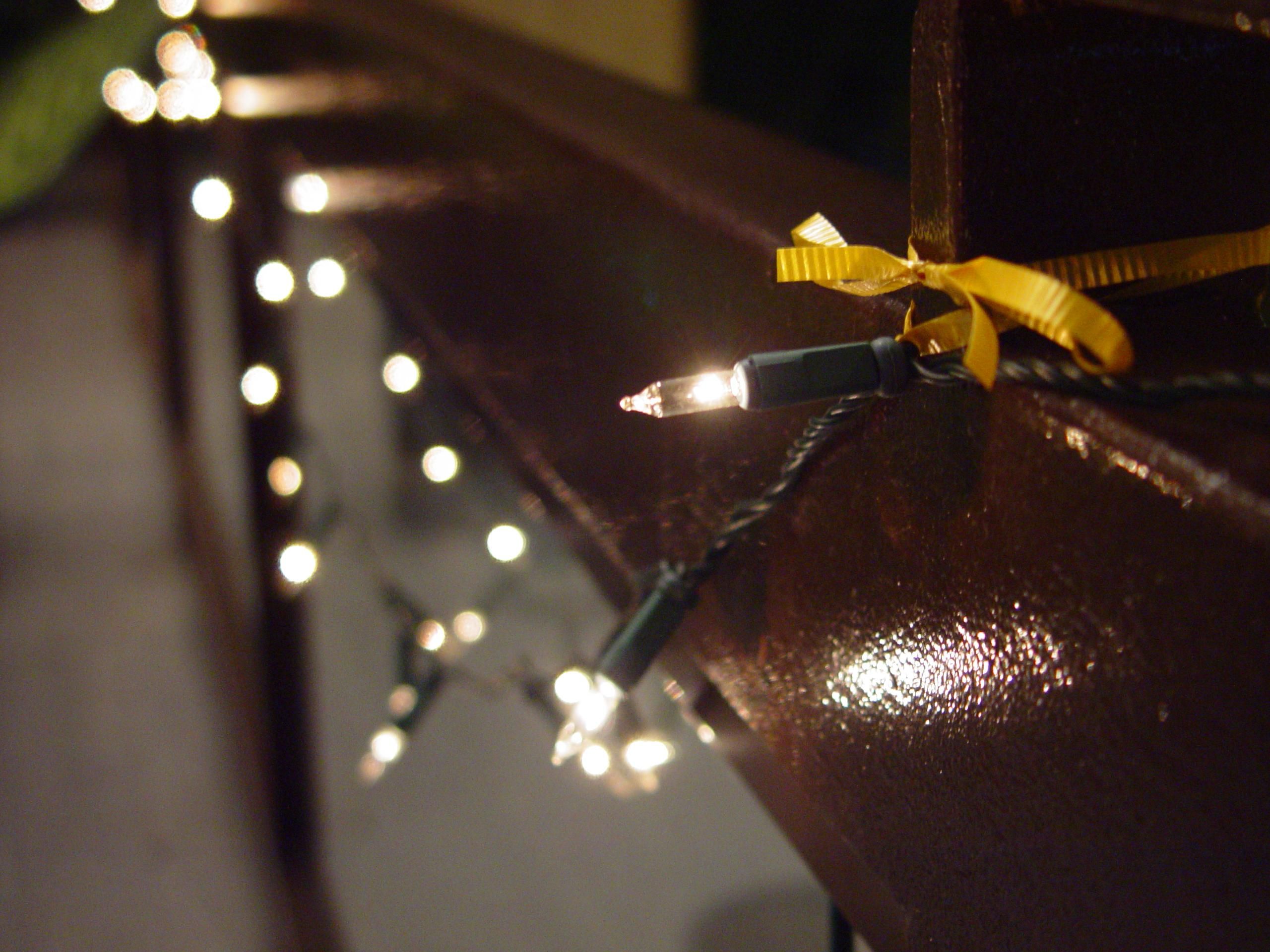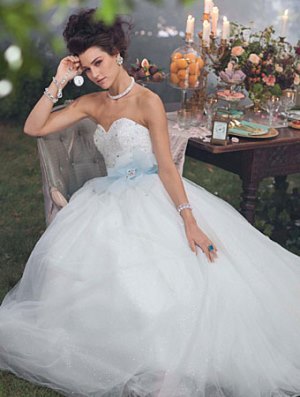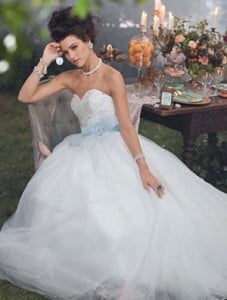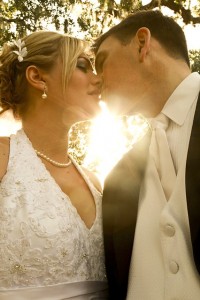
Is there any fabric more romantic than lace? It’s no accident that so many wedding dresses have lace accents and overlay. Lace wedding dresses can have subtle accents of delicate lace, thick, textured lace, or a combination of lace varieties. Here are some tips for choosing a lace wedding dress.
Several designers are creating wedding gowns that are completely covered in lace as part of their latest collections. The dresses may have a simple, sheath silhouette, a gown with a flared skirt, or form-fitting dresses. Since lace wedding dresses come in the full array of available wedding dress styles, the bride may want to begin her selection by deciding which wedding dress styles would be most flattering for her body type. If she can choose whether she wants a sheath, mermaid, ball gown, or A-line dress, she can focus her search for the perfect wedding dress.
Traditionally, lace is delicate and flowery. Bold lace makes a statement. Claire Pettibone designed such a dress. The Guipure lace sheath dress has thick lines and a large lace design that covers the entire dress. It’s a sophisticated mix of the striking lines and flowing fabric.
Sheath dresses are a common style for lace wedding gowns. Sheath dresses that have a full lace overlay have an outer layer of lace over the entire dress. The underlying fabric keeps the dress from being too transparent. The intricate design of the lace can be a nice balance with the simple silhouette of the sheath dress.
Mermaid wedding dresses fit snuggly at the top with a skirt that flares outward from thighs. Lace lends itself well for creating beautiful effects for both an overlay over the form-fitting top or as part of the flared, flowing skirt.
Most lace wedding gowns have a layer of lace over a more substantial fabric. This helps with durability as well as preventing the gown from being revealing. Some designers embrace the transparent nature of lace to create cutouts that show the skin through the lace.
Risqué wedding dresses might have designs where part of the gown is only lace. An example of this are the wedding dresses that have a bodice that resembles a bustier. A few modern bustier wedding dresses use lace as the primary fabric for the bodice.
With the DIY trend, some brides use lace appliqués to create their own cutouts. This commonly is done on the sleeves if the sleeves are plain. Brides should take care when adding appliqués to other portions of the dress. A misplaced cutout can render the gown too revealing. She may need to rush to find a seamstress who can fix her blunder or be uncomfortable during the big day.
The disadvantages of lace is it’s delicate nature. The lace can get snagged and tear. It’s an important consideration when choosing a dress that has a full layer of lace. The bride may want to restrict her bridal jewelry to earrings and necklaces and forego the bracelets that might catch on the fabric.
For more helpful information about choosing the perfect wedding dress, please visit the Best for Bride blog.
















